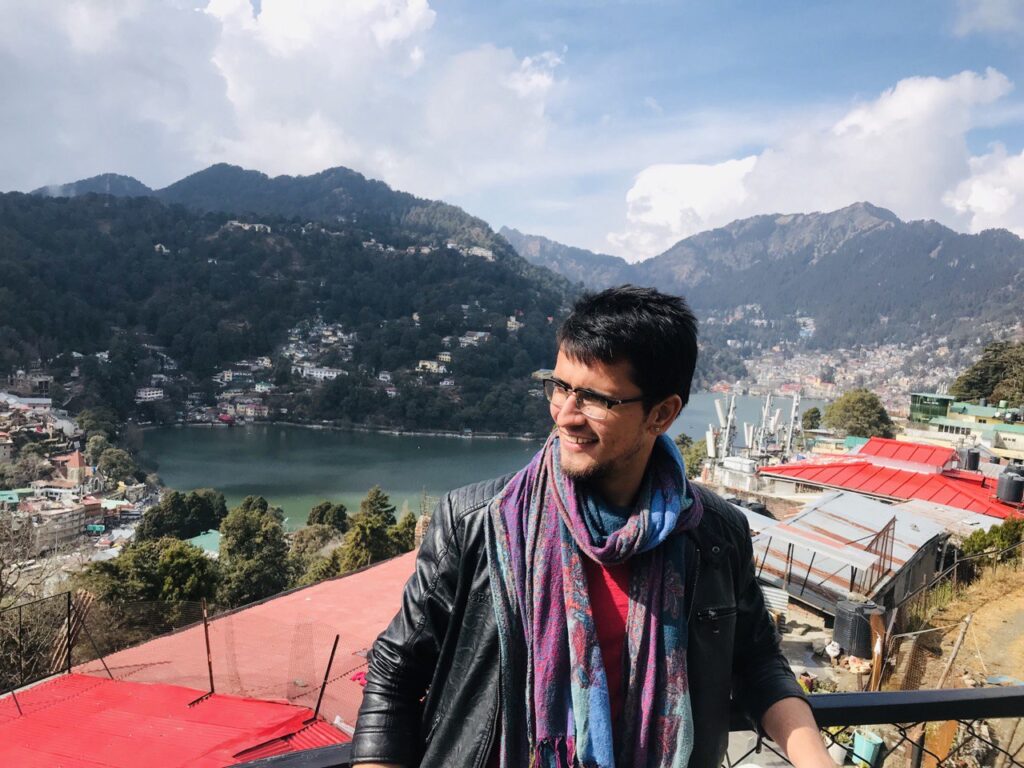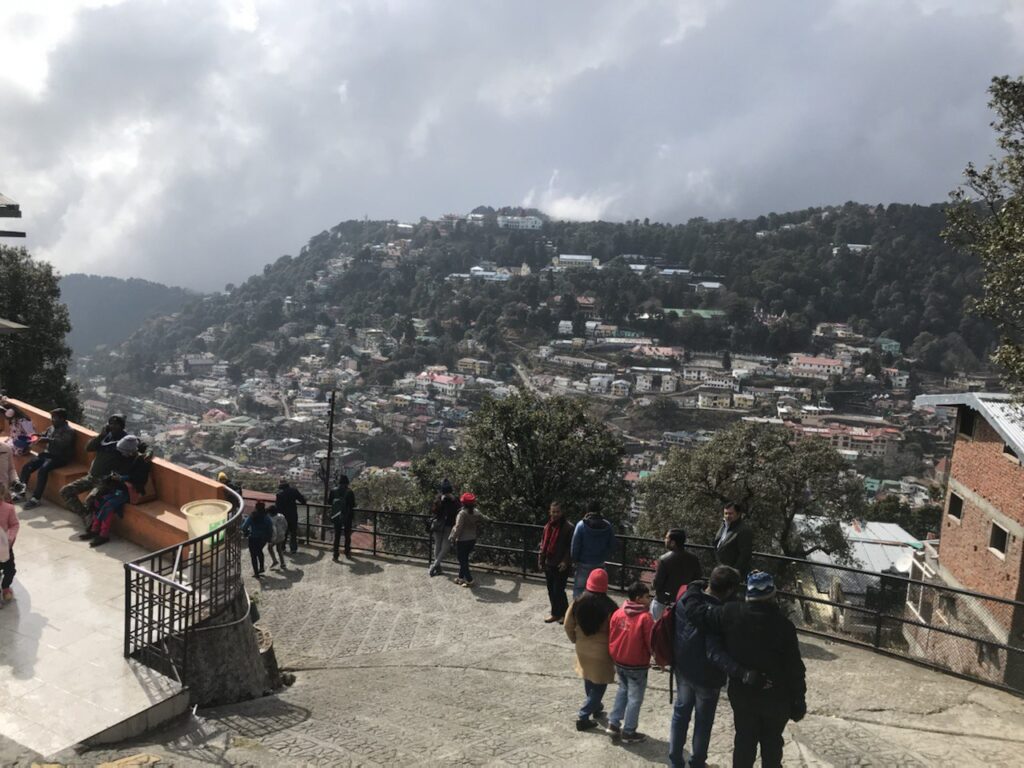
Overview of Nainital: The City of Lakes
Nainital is the true treasure trove of Kumaon, engulfed in a thick shield of nature and enhanced by the aroma of the blossoming blooms that mysteriously blends in the crisp pure air. Since the British era, it has become one of the most popular hill stations in North India. The dazzling city of Nainital, which is perched at a height of 2,084 metres (m) above sea level, is praised for having given birth to the gorgeous Naini Lake, from which it has acquired the name “lake city.” Both domestic and foreign tourists are drawn to the town of Nainital. It glitters like a sparkling gem in the Himalayan Mountains and is surrounded by lakes and the beauty of nature.
The Lake District in the state of Uttaranchal is abounding in natural beauty. Naini Lake, which is surrounded by hills and is said to be one of the emerald eyes of Shiva’s bride, draws boaters in droves. The highest peak, Naina Peak (also known as China Peak), is accessible by foot or horseback and offers breath-taking views of the snow-covered Himalayas. Take the aerial lift up to Snow View, where there is a modest marble shrine honouring Dev Mundi, to enjoy a fantastic view point with family members of all ages.
History of Nainital
The Tri-Rishi-Sarovar, also known as Nainital, is the lake of the three sages Atri, Pulastya, and Pulaha who are said to have come here on a penitential pilgrimage and, upon discovering no water to quench their thirst, dug a hole and syphoned water into it from Mansarovar, the sacred lake in Tibet. This lake is mentioned in the “Manas Khand” of the “Skanda As one of the 64 “Shakti Peeths,” Nainital is mentioned in mythology a second time. When Lord Shiva was dragging about Sati’s burned corpse in sadness, these centres were established wherever its various pieces had fallen. The left eye (Nain) of Sati is supposed to have fallen here, becoming the patron goddess of the town of Nainital. The lake is supposed to be shaped like an emerald eye. The Naina Devi shrine is situated at the lake’s northernmost point. Naina and the tal are the sources of the name Nainital (Lake).
In 1815, the British took control of Kumaon and Garhwal. E. Gardiner was named the commissioner of the Kumaun Division on May 8, 1815, following the British occupation. The second Kumaun commissioner, Mr. G.W. Traill, performed the second Kumaun revenue settlement in 1817. Mr. Traill was the first European to visit Nainital, but he chose not to make his trip widely known out of respect for the location’s religious purity. An English businessman from Rosa named Mr. P. Barron, a sugar dealer, and his buddy, a keen hunter, wandered into the hills while out hunting and became lost. As they were trying to find their way back, they happened onto the wonderful location. Barron was so mesmerised by the image of the serene lake that he quit his job as a sugar merchant and established a European Colony along its borders. An article in the “Englishman Calcutta” in 1841 announced the finding of a lake (Nainital) close to Almora.
Geography of Nainital

The Kumaun division of Uttarakhand contains the Nainital district. The Almora district is to the north of it, while Udham Singh Nagar is to the south. It is bordered to the east by the Champawat district and to the west by the Pauri Gahwal district. The district has a pleasant environment as a result of the Himalayan hills on the district’s northern and plains on its southern sides. 4251 square kilometres (Km) make up the whole region. The district is geographically separated into the Hilly and Bhabar zones. Geologists refer to the hilly area of the outer Himalayas as Krol. There are large and tiny lakes in the district’s steep terrain. Larger lakes include Bhimtal, Sattal, Naukuchiatal,Khurpatal, Nainital, Malwatal, Harishtal, and Lokhamtal, among others.
Bhabhar is the name of the district’s foothills. A tall grass native to the area is the source of the name Bhabhar. In this area, the depth of the subsurface water is particularly great. The district’s principal river is the Kosi. On the western part of the area, the river Kosi runs from Koshi Mool near Kausani.
Places to visit
Naini lake
The city of Nainital is dominated by Naini Lake, famous for boating. In the slopes of the Himalaya, there is a freshwater lake that like a fascinating jewel and is surrounded by oak trees. Pear-shaped and extending 1.4 Km, it has a coastline that is dotted with guest cottages, temples, mall roads, and trees. Nainital Lake, which is surrounded by seven hills, is a favourite destination for couples travelling together.
Naina Devi Temple
The Naina Devi Temple, a well-known Hindu pilgrimage destination in Nainital, is located on the shores of the Naini Lake.
Naina Peak
When viewed from a distance, Naini Mountain, Nainital’s tallest peak, captures the attention of every visitor. The top, which stands at 2615 m, is sometimes covered with snow-covered trees, giving it a lovely appearance. A 6 Km hike to Naina Peak is well worth.
Zoo in Nainital
One of Nainital’s top attractions for those who enjoy nature is the Bharat Ratna Pt. Govind Ballabh Pant High Altitude Zoo Nainital.
Ropeway Aerial
A key lure for visitors to Nainital, the Nainital Cable car or Aerial Ropeway allows them to fully experience Nainital Hill Station and the beautiful vistas of Naini Lake.
The Mall Road
One of the most well-known names in Nainital is The Mall.
Tiffin Top
Tiffin Top, also known as Dorothy’s Seat, is a well-liked picnic area in Nainital.
Eco Caves Garden
Nainital’s Eco Cave Gardens is a recently constructed tourist destination. It consists of a number of naturally occurring, connected animal caves. Its architecture is inspired by Gothic style.
Raj Bhawan
The Governor of Uttarakhand now resides in Raj Bhawan, popularly known as Governor House, a structure from the British era.
Nainital High Court
The building of Uttarakhand High Court was constructed by Santoni MacDonald in 1900. It is built in Gothic style. Ajay Rawat, a professor of history, claims that the origins of this design may be traced to northern France, northern England, and the Lombardy region of northern Italy.
Kainchi Dham
A famous saint named Neem Karoli Baba founded Kainchi Dham, a Hanuman temple and ashram, in the 1960s. The distance from Nainital to this location is about 17 Km.
Accommodation /Hotels
Manu Maharani hotel resort, Shervani hilltop Nainital, Welcome Heritage Ashdale, The Naini Retreat by Leisure Hotel Groups
How to reach
By Air: The closest airport to Nainital is Pantnagar Airport. After then, a bus or taxi must go the last 70 Km on the route.
By Train: The distance from Nainital to Kathgodam Railway Station via rail is 23 Km. Trains to Kathgodam Railway Station are available from all major Indian cities. From New Delhi and Kathgodam, the well-known Ranikhet Express runs. You may take a bus to Nainital after arriving there.
By Road: The 300 Km Road trip must be completed by a bus if you are departing from New Delhi. You may go in around 7 hours by bus starting at the Delhi Kashmiri Gate ISBT.
Climate and Weather
Summer
With the minimum of 20°C and maximum ranging to 32°C, Nainital has a pleasant weather during summers. Most of the exciting activities are enjoyed by people at this time.
Monsoon
Since Nainital experiences frequent rain, taking a sightseeing excursion at this time of year might be challenging. It is advisable to first check the weather prediction before organising a visit here because there are occasionally landslides and bottlenecks during the rainy season. Between 15°C and 28°C is the typical monsoon temperature.
Winter
The temperature drops to a minimum of 0°C and a maximum of 10°C. The newlyweds and those who need to spend some romantic time together have this time of year to themselves.
Some other key points about Nainital
What is the best time to visit Nainital?
Nainital is ethereal, with its timeless beauty residing within the frozen lakes and snow-capped mountains of this hill town attract tourist almost all throughout the year. However, the best time to visit Nainital is from March to June which is the summer/spring season. The Himalayan ranges call out to you as they watch every step that you take like a guardian angel.
March to June is the peak season.
October to February is the shoulder season.
July to September is the low season.
How long is enough time in Nainital?
3 days
As there are many locations in and around Nainital, it will take at least three days to leisurely tour Nainital and its surrounds.
Which month does Nainital’s snow season begin?
The winter season in Nainital begins in November and lasts until February. With the coldest days seeing temperatures below 0 degrees Celsius, this season has a lovely foggy beauty. If you enjoy snow, consider travelling at the end of December and January.
Which airport is near to Nainital?
Airport in Pantnagar.
The Pantnagar Airport in Pantnagar is the closest domestic airport to Nainital and is about a one-hour drive away. Jet Airways, Air India, and Spice Jet offer convenient connections to New Delhi and Mumbai.
Is it worthwhile to visit Nainital?
One of the nicest hill towns in India, Nainital is surrounded by lush hills, historic cottages, and a maze of winding lanes. The town is well-known for its many natural features as well as for having a pleasant temperature all year round.
Thank you for visiting our website “Your Fact Houses” (www.your.facthouses.com)
